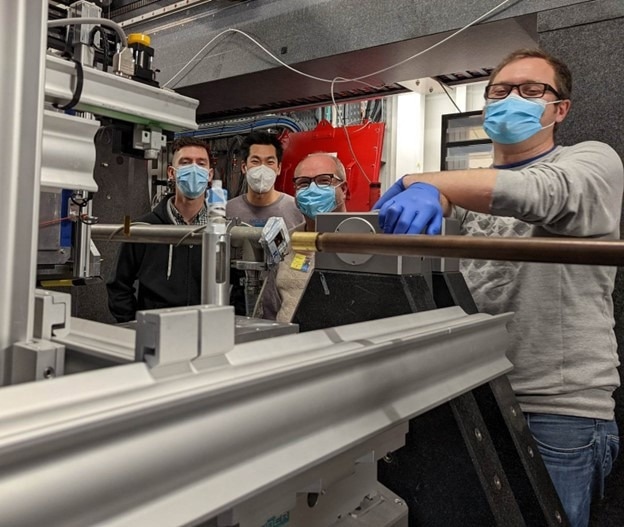Scientists at McGill and UQAM propose an exceptional view inside lithium-ion batteries by developing a novel method, which potentially leads to faster charging times for EVs, computers, and phones.

Image Credit: Isabelle Beaulieu
This enables the charging of electric vehicles in the same time as it takes to fill gas in a tank.
Scientists from McGill University and the University of Quebec in Montreal (UQAM) declared the expansion of a novel method that enables scientists to peer inside Li-ion batteries and trace the physical procedures happening during the liquid and solid parts of the battery cells.
The research was published in Joule.
This breakthrough unveils crucial factors impacting the charging and discharging speed of Li-ion batteries. It holds the potential to enable swift charging capabilities in crucial and extensively used electronic devices and vehicles, spanning from laptops and cellphones to electric bikes, scooters, and cars.
The research, spearheaded by chemistry professors Janine Mauzeroll at McGill and Steen B. Schougaard at UQAM, in collaboration with the European Synchrotron Radiation Facility (ESRF), employed intense X-Rays to peer inside Li-ion battery cells.
This innovative technique effectively mapped alterations in lithium concentration in real-time as the batteries underwent charging or discharging processes.
As a Li-ion battery charges or discharges, lithium travels inside the cell in both a liquid electrolyte and a solid active material, and how fast this happens generally depends on how fast the lithium can move from one side of the cell to the other through both these phases. This work is the first report of a method that can map lithium in both the solution and solid phase of a Li-ion battery during the operation of the battery, allowing us to quantify the performance of a cell at the molecular level.
Jeremy Dawkins, Ph.D. Student, Department of Chemistry, McGill University
This research leads to the development of far-reaching suggestions, from the highly specified battery research community to anyone using an electronic device or vehicle.
This work is interesting because it provides a substantial new tool for researchers to study Li-ion battery performance, and it opens a lot of doors that were previously closed off,” “We hope it will lead to accelerated battery research, for example by obtaining superior electrode architectures much sooner. This could translate to better performance of the batteries we use every day.
Jeremy Dawkins, Ph.D. Student, Department of Chemistry, McGill University
The researchers described the project as a COVID-19 success tale. While the McGill and UQAM teams operate from Montreal, the crucial measurements were conducted at the European Synchrotron Radiation Facility in Grenoble, France.
When the pandemic struck in 2020, triggering travel restrictions by governments, the project faced uncertainty due to the logistical challenges posed by these restrictions.
The Faculties of Science at McGill and UQAM granted key travel exemptions to make these measurements possible.
Janine Mauzeroll, Corresponding Author, Department of Chemistry, McGill University
Dawkins adds, “Our collaborators at the ESRF in France did everything they could to measure our samples during the peak pandemic years. Through willpower and more than a sprinkle of luck, our limited measurement time ended up being successful.”
Journal Reference
Dawkins, I, G, J., et al. (2023). Mapping the total lithium inventory of Li-ion batteries. Joule. doi.org/10.1016/j.joule.2023.11.003